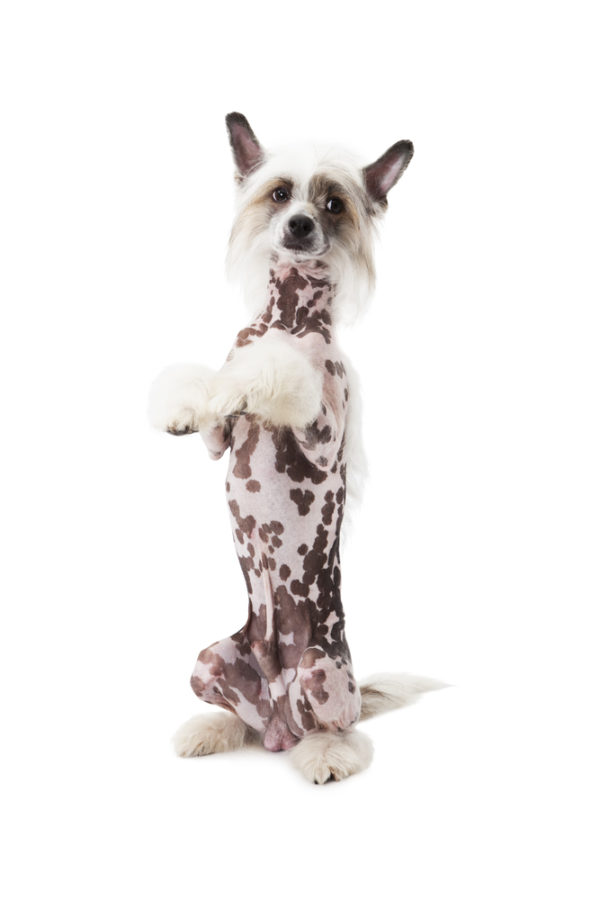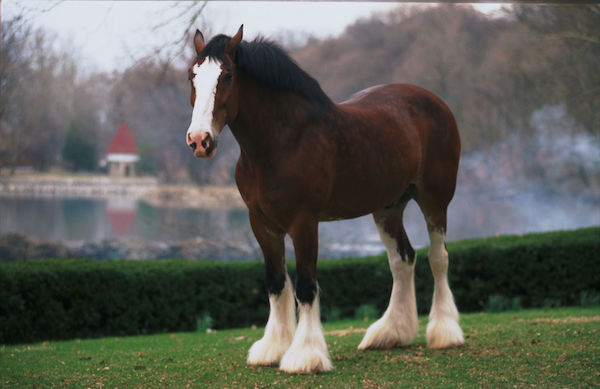
You don’t find the word, “Clydesdale” anywhere in the Chinese Crested Hairless’ breed standard for obvious reasons, but judges will come across the word in the breed’s AKC study guide, and we thought it would be entertaining to mention two very different animals in one post.
Everyone knows (and loves) Clydesdale horses, and it’s easy to conjure up an image of this horse in one’s mind:

One of the stand-out features of the Clydesdale is the hair – or feathering – on the lower legs. Feathers are a characteristic trait of heavier equine breeds, and while the majority of horses with feathering are draft breeds, not all draft breeds have feathering.
Enter the Chinese Crested Hairless. Look at the picture, and you’ll see where we’re going with this:

The Hairless variety of this breed has hair on its head (called a crest), the tail (called a plume) and on the feet from the toes to the front pasterns and rear hock joints (called socks). The “socks” can be just on the feet, and they can be sparse. They can also be heavy and reach up to about the pastern or hock joint much like a Clydesdale.
Interestingly, when scientists discovered the gene mutation that causes hairlessness in dogs, they used DNA from Chinese Crested dogs to discover the mutated gene. They found that the mutated gene was the blueprint for a protein that binds to DNA which then controls the production of other proteins. The changes caused by the DNA mutation subsequently cause the dog to be hairless which is caused by a dominant gene. When a dog has two of the dominant hairless genes, it often leads to prenatal death, and thus every hairless variety has one gene for long hair and another for hairlessness.
